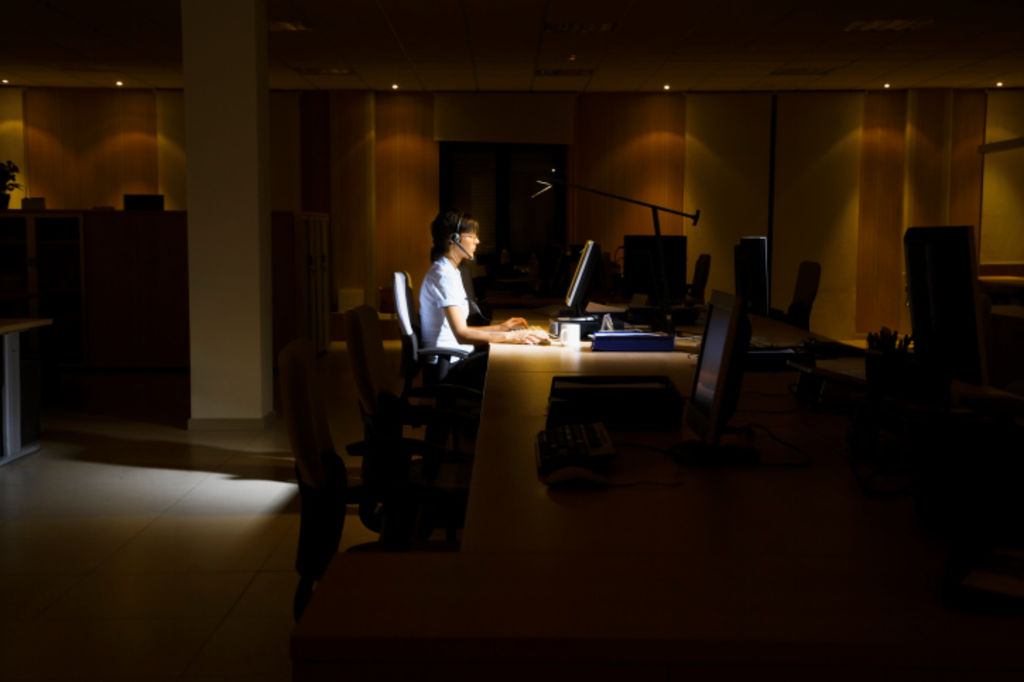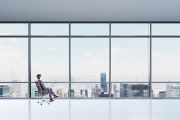
Ever heard of 'distance bias' at work? You might want to change desks
Rachel Nickless
This morning I walked five metres across the office to talk to a colleague and he mentioned that he was sitting “in Siberia”.
It might sound like an exaggeration, given that he’s at a desk on the edge of a busy newsroom, but it struck a chord with me after a recent interview with a neuroleadership expert.
Unconscious bias usually comes up in terms of racism, sexism or ageism. But after 2½ years of research with University of California Los Angeles professor Matthew Lieberman, neuroleadership expert David Rock identified that people have up to 150 forms of unconscious biases that fall into five categories.
One of those categories is “distance bias”; the tendency to favour people who are closer to us in time and space.
 Feeling left out at work? You could be the victim of unconscious bias. Photo: Thinkstock
Feeling left out at work? You could be the victim of unconscious bias. Photo: Thinkstock
Rock, director of the NeuroLeadership Institute, tells me from his home in New York that “distance bias” is “not just a matter of out of sight, out of mind”. “It’s also thinking that [something or somebody] further away is reduced in value,” he says.
“You are much more likely to hire somebody who is physically close to your office, even though you’ll never see them, than someone further away from your office, even though neither of them will ever come into the office,” Rock says.
How distance affects decisions
Distance bias isn’t yet accepted by all unconscious bias experts, but it makes sense to me.
In a recent meeting I realised later I didn’t give as much weight to the views of a few colleagues who dialled in from home as I did to the views of people sitting in the same room as me. I don’t think it can simply be explained by a lack of eye contact or a crackly phone line.
In an age where people are increasingly working virtually, or in teams spread around the world, it’s something that leaders should be turning their minds to more often. Distance bias, like other unconscious biases, can result in poorer decisions.
Workplace design consultant James Calder points out that distance bias may even affect those working in the same office, but sitting further away or on a different floor from decision-makers.
You can’t cure your brain of bias
And don’t think that just because you know about distance bias, it will no longer be a problem for you.
“People have to accept that if you have a brain, you are biased,” says Rock, who authored Your Brain At Work.
“Most human behaviours can be altered by force of will … but here you can only only nudge it a tiny bit on the periphery,” he says.
The best thing you can do to tackle distance bias is to change processes or physical arrangements before it happens.
Incidentally, this is the best way to tackle forms of bias which destroy workplace diversity, such as “similarity bias” where we tend to think people who look like us, speak like us or have the same background are better than others. That’s why law firms like King & Wood Mallesons are using blind CVs when hiring graduates.
Rock also suggests that hiring managers use blind CVs, including blotting out where a person lives to tackle distance bias. Doing at least one round of job interviews on the phone rather than face to face also reduces the chance of discriminating against those who are further away.
Where it is impossible not to know where a candidate for a job or promotion is, having a group of people spread across different offices making the decision can help, he says.
The Atlassian approach
Some companies, like software firm Atlassian, which has offices dotted across the globe, have also come up with clever ways to reduce the problem of distance bias in daily work.
Calder says his client, Atlassian, set up a video link between the staff kitchens in two offices so staff had the chance to connect with overseas colleagues in a casual way.
Atlassian also places a flat screen at the end of a team desk so that two groups in different offices which need to collaborate have the feeling of working next to one another.
Other solutions are not reliant on technology at all. Calder suggests that firms use “designed inconvenience” to ensure their staff interact more no matter where they sit, and adds many organisations are already embracing this concept to encourage collaboration and innovation.
Macquarie Bank put staff cafes on alternate floors at its offices at 50 Martin Place in Sydney. Another of Calder’s clients, National Australia Bank, put its help desk on the top floor of 700 Bourke St Docklands, in Melbourne, to encourage people to move around on different floors.
For those of us in an “activity-based working” environment it might just be a matter of changing priorities for desk selection. Now the desk in front of your boss, in the centre of the madding crowd, may become more attractive.











